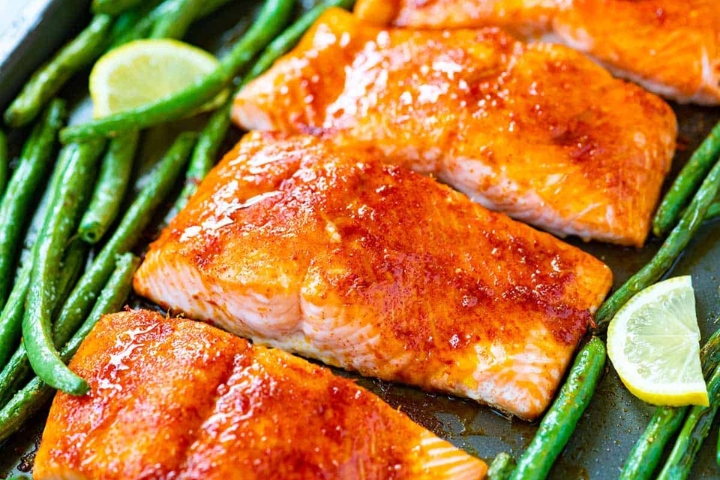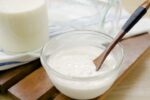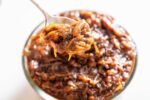Check out how long to bake salmon. Baking salmon in the oven is not only a popular method among home cooks but also a widely recognized and versatile way to prepare this delicious and highly nutritious fish.
How long to bake salmon:
Regardless of your culinary expertise, whether you’re a seasoned chef with years of experience or a novice exploring the world of cooking, having a solid grasp of the ideal baking duration for salmon is indispensable for attaining that perfect balance of tenderness and flakiness.
By delving into factors like thickness variations in filets, desired levels of doneness, and the specific cooking techniques employed, this comprehensive guide is designed to assist you in pinpointing the precise baking time tailored to your salmon dish, enabling you to consistently achieve exceptional results time and time again.
Factors That Affect Baking Time
Before diving into the specifics, it’s important to understand the factors that influence how long salmon should be baked:
- Thickness of the Fillet: The thickness of the salmon fillet is the primary factor in determining baking time. Thicker fillets will take longer to cook compared to thinner ones.
- Oven Temperature: The temperature at which you bake the salmon affects the cooking time. Higher temperatures cook the fish more quickly but can also increase the risk of overcooking.
- Type of Salmon: Different types of salmon (such as Atlantic, Sockeye, or Coho) have varying fat content and thickness, which can influence cooking times.
- Desired Doneness: Some people prefer their salmon slightly underdone for a more tender texture, while others like it fully cooked through. Your preference will dictate how long to bake the fish.
Recommended Baking Times for Salmon
Here are general guidelines for baking salmon in the oven:
1. Baking at 350°F (175°C)
- For 1-inch thick fillets: Bake the salmon for 20-25 minutes.
- For ½-inch thick fillets: Bake the salmon for 15-20 minutes.
Baking at 350°F is a gentle method that ensures the salmon cooks evenly without drying out. This temperature is ideal if you’re looking for a more tender, delicate texture.
2. Baking at 375°F (190°C)
- For 1-inch thick fillets: Bake the salmon for 18-22 minutes.
- For ½-inch thick fillets: Bake the salmon for 12-18 minutes.
This temperature strikes a good balance between cooking the fish quickly and maintaining moisture. It’s a versatile option that works well for most salmon fillets.
3. Baking at 400°F (205°C)
- For 1-inch thick fillets: Bake the salmon for 12-15 minutes.
- For ½-inch thick fillets: Bake the salmon for 8-12 minutes.
Baking at 400°F is a faster method, which can be great if you’re short on time. However, be mindful of the cooking time, as the higher temperature can dry out the fish if overcooked. This method also helps in achieving a slightly crispier exterior, which some people prefer.
4. Baking at 425°F (220°C)
- For 1-inch thick fillets: Bake the salmon for 8-12 minutes.
- For ½-inch thick fillets: Bake the salmon for 6-10 minutes.
At 425°F, the salmon cooks very quickly and develops a beautiful golden crust. This method is ideal if you want a slightly crisp texture on the outside while keeping the inside moist.
How to Check for Doneness
Regardless of the baking time or temperature, the best way to ensure your salmon is perfectly cooked is to check for doneness. Here’s how:
- Use a Meat Thermometer: The internal temperature of fully cooked salmon should be between 125°F (52°C) and 135°F (57°C) for medium-rare to medium. If you prefer your salmon more well-done, aim for an internal temperature of 140°F (60°C).
- Check the Color and Texture: Properly cooked salmon will turn opaque and easily flake with a fork. The flesh should be a consistent pink or coral color throughout, without any translucent (raw) areas in the center.
- Touch Test: Lightly press the top of the fillet with your finger. If it feels firm but still slightly springy, it’s done. If it feels mushy or overly firm, it may be undercooked or overcooked, respectively.
Baking salmon in the oven is a simple but tasty method to consume this nutritious seafood. You can bake salmon correctly every time by taking into account the thickness of the fillet, the oven temperature, and your desired level of doneness.
Whether you prefer it soft and moist or with a little crispy skin, this advice will help you get the finest results.





GIPHY App Key not set. Please check settings